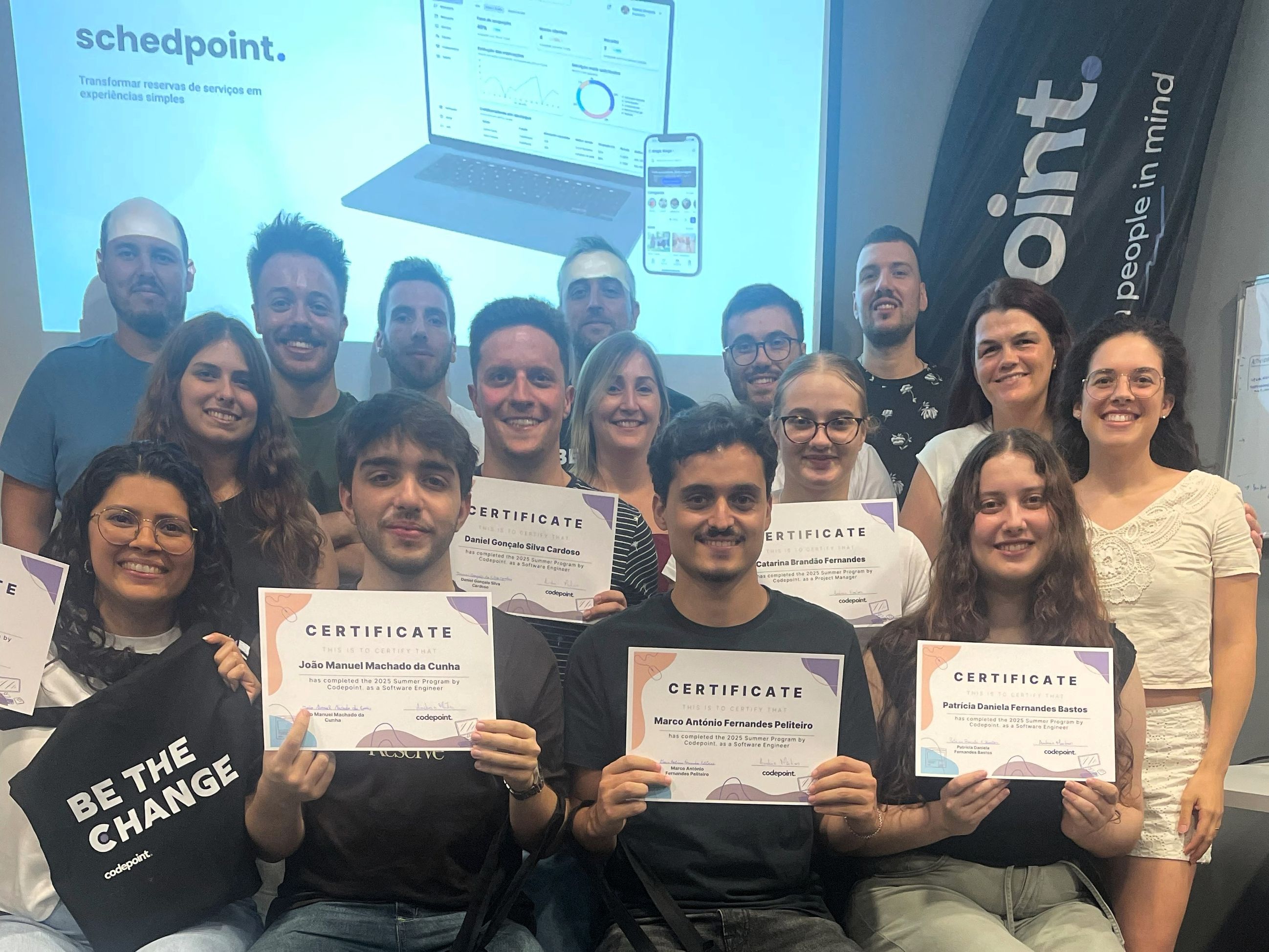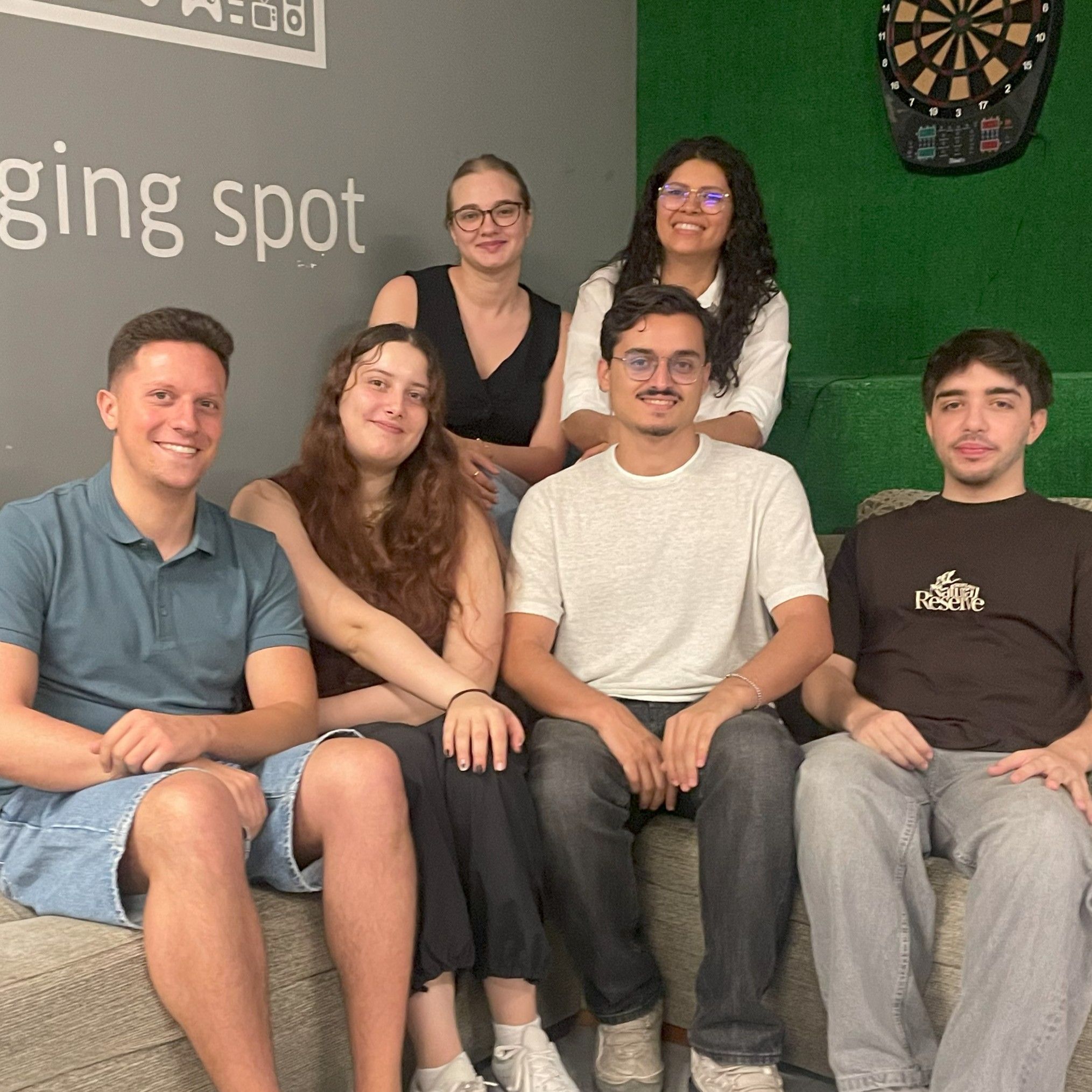
Schedpoint. [Summer Program 2025]
Transforming service reservations into simple experiences
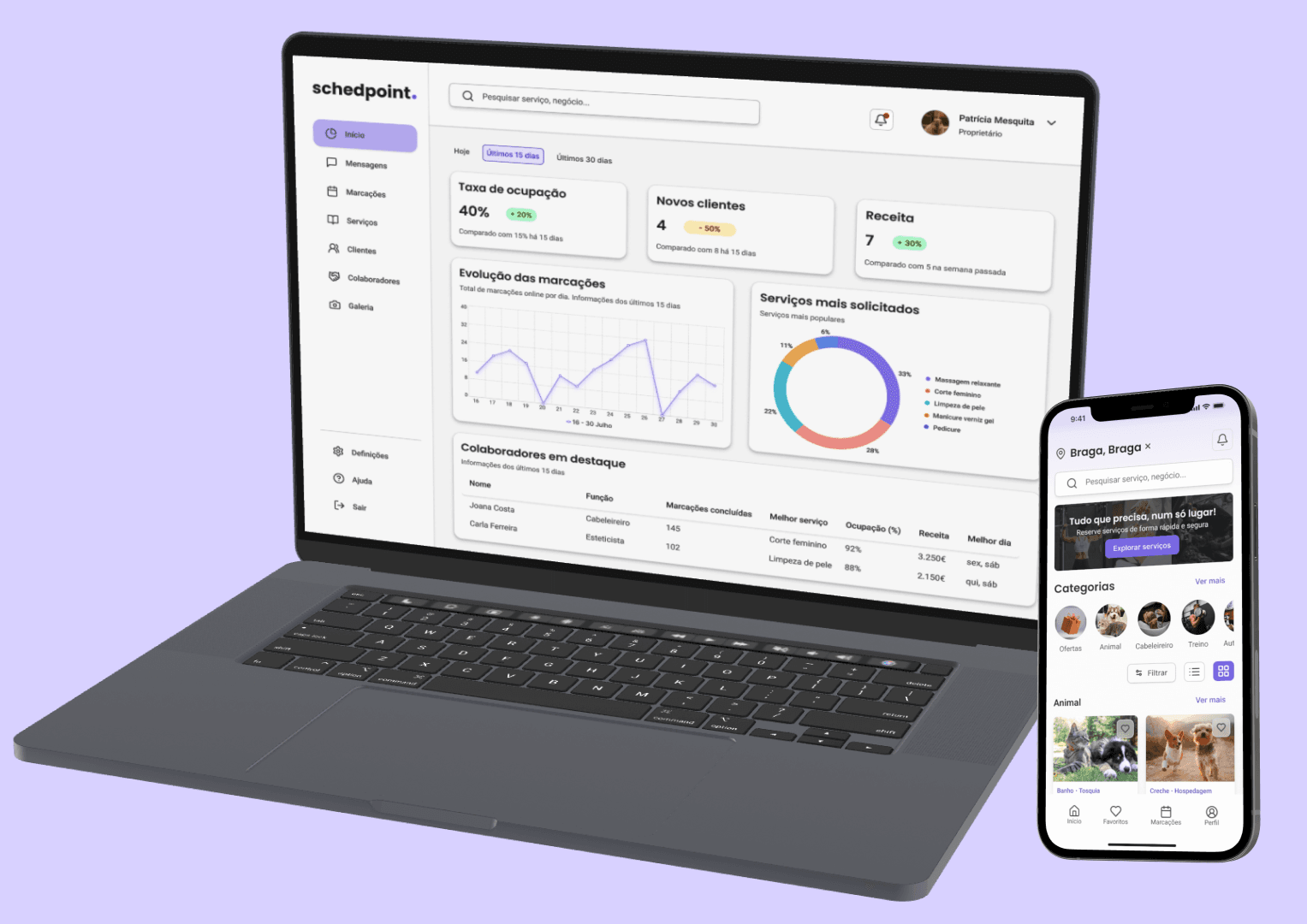
Schedpoint is a booking management platform that streamlines the connection between service businesses and their clients.
With an intuitive web app, clients can schedule services quickly and clearly, while business owners centralise bookings, catalogues, and teams in a single dashboard. The result is a practical, modern, and accessible experience for everyone.
Schedpoint is a digital platform developed to simplify the management of service appointments. The project was developed by a multidisciplinary team consisting of a UX/UI designer, a project manager and four developers, and has two complementary aspects:
Desktop version: designed for managers and business owners, it functions as a complete control panel, allowing you to manage schedules, services, customers, and staff in one place.
Mobile version: designed as a service marketplace solution, aimed at end customers. Through the web app, users can search for professionals, schedule services quickly and intuitively, and track their appointments with complete transparency.
Together, these two solutions meet both the operational needs of businesses and the expectations of simplicity and efficiency of customers.
The project was developed in Codepoint's collaborative environment, where mutual support, knowledge sharing, and team spirit were key to its success.

Transform service reservations into simple experiences.

Clients struggled to find quickly and book services, while business managers relied on scattered and unintuitive tools to manage bookings, catalogues, and teams. The challenge was to develop a single solution that would be simple for the end user and, at the same time, robust for businesses.
A key strategic decision was to create a web app instead of a native application. This choice allowed:
Universal compatibility and immediate access via the browser, no installation required;
Lower barrier to entry for users and businesses;
Similar to a native app, offering features such as notifications and a navigation menu;
Automatic updates without the need for an app store;
Faster implementation and maintenance.
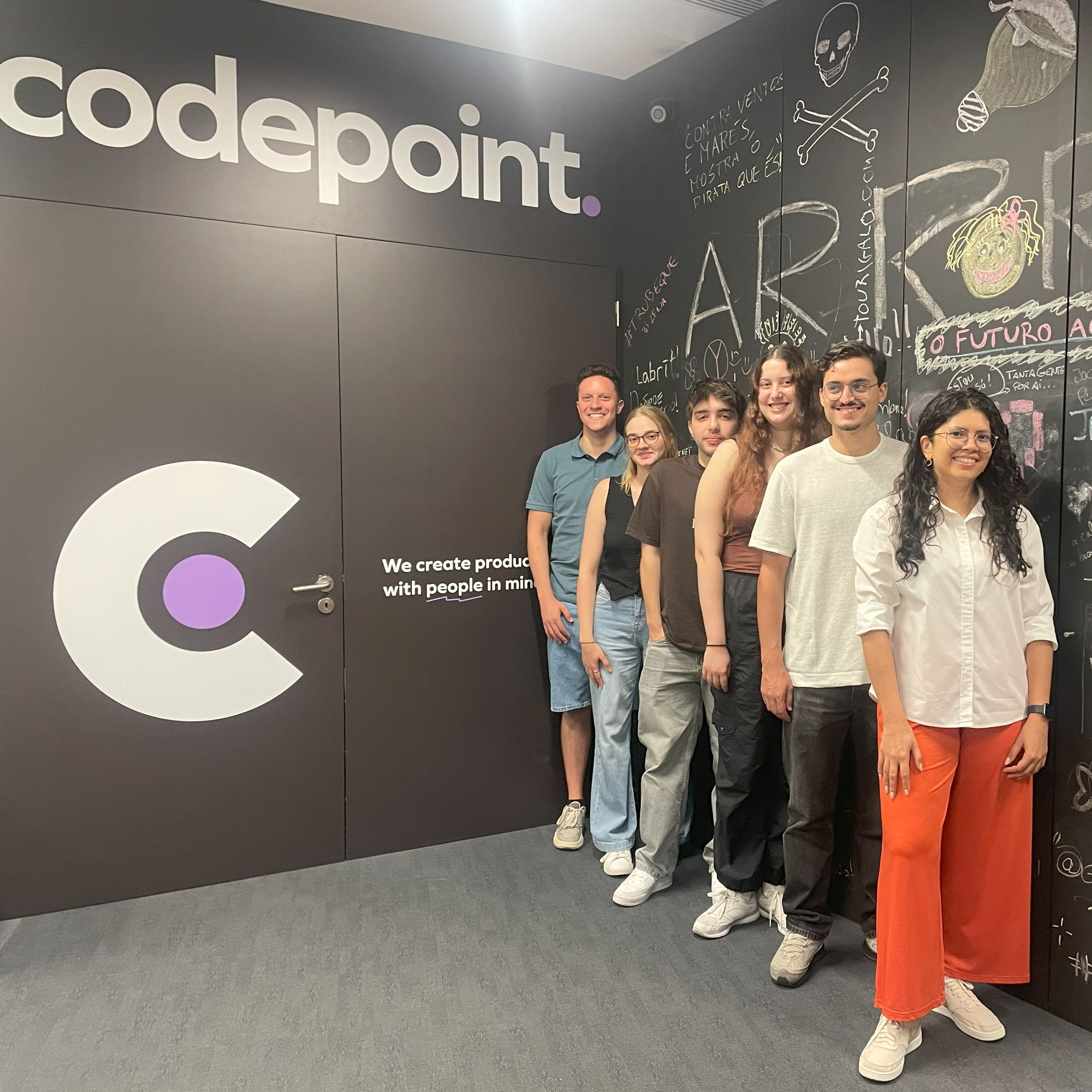
The development of Schedpoint became a reality thanks to a multidisciplinary team, in which each member contributed essential skills to transform the idea into a real product, shared knowledge, and faced technical and creative challenges together.
Project and Product Management
Catarina Fernandes
Development
Daniel Cardoso
João Cunha
Marco Peliteiro
Patrícia Bastos
UX/UI Design
Patrícia Mesquita

For clients: enable quick, simple, and clear bookings.
For business managers: centralise bookings, catalogue, and team management in one dashboard.
From a technical perspective: design a scalable architecture, supported by a well-structured API.
From an experience perspective: ensure an accessible, intuitive, and consistent interface.

To ensure that the product would meet the needs of both end users and business owners, we began with an in-depth research phase.
Desk Research: We analysed market reports and studies on online scheduling, identifying that 68% of users prefer to schedule online and that for 84% speed and personalisation impact satisfaction.
Competitive Analysis: We studied 14 direct and indirect competitors, evaluating features, customer reviews, and competitive advantages, which allowed us to map opportunities for improvement and benchmarks for the product.
User Interviews: We conducted 7 interviews, revealing that users value above all a fast and automatic booking experience.
Business Owner Interviews: We interviewed 6 managers, who pointed out that the main challenges were managing multiple bookings and responding on time, reinforcing the importance of simple administrative features in the desktop version.
Based on these insights:
Brainstorming: To generate ideas aligned with the main pain points.
MVP Matrix: We prioritised features, highlighting quick scheduling and category viewing as essential.
MoSCoW Workshop: We defined the MVP backlog, ensuring a simple experience for users and an efficient one for managers.
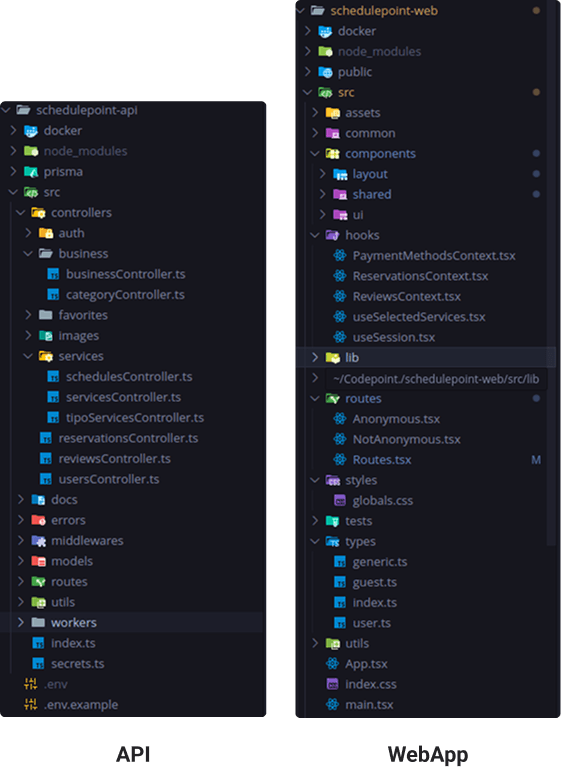
The developers configured the initial architecture: API structure, web app organisation, and repository folders.
Benefits of this architecture:
Facilitates new integrations without changing the entire structure;
Optimises performance;
Enables fast and secure updates.

For the mobile version of the application, we started with low-fidelity wireframes. These early sketches helped us define the information hierarchy and quickly validate the main navigation flows before investing in visual details.
We then moved on to mid-fidelity wireframes, where the organisation of interface elements was refined. This stage allowed us to test different layout structures and make more solid decisions about the user experience.
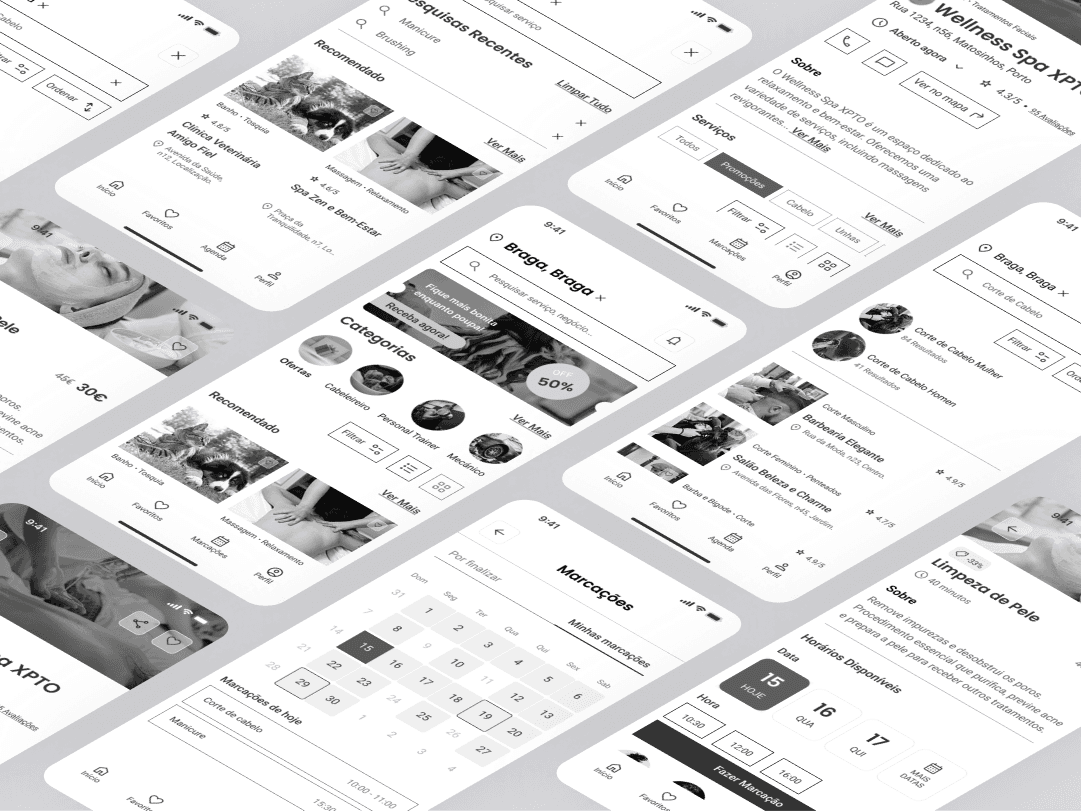
We created an accessible design system, featuring a modern palette, legible typography, and rounded icons. Consistency between mobile and dashboard was ensured through reusable components.

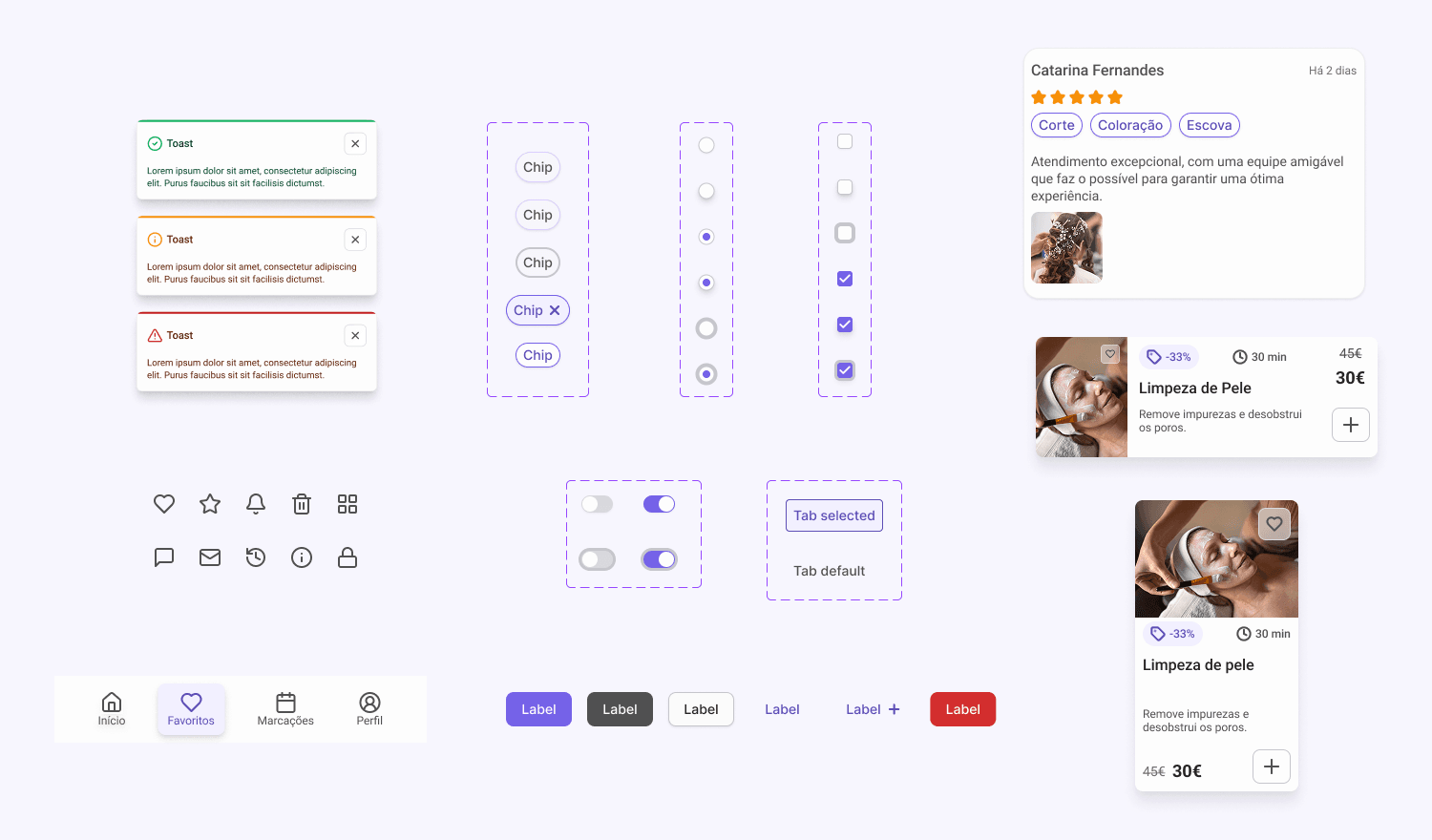
The outcome of the project is an integrated solution composed of a mobile application and a desktop dashboard, both designed to address the specific needs of Schedpoint’s two main audiences: end users and business owners.
In the mobile version, the focus was on delivering an intuitive and straightforward experience for booking services. Users can easily browse the catalogue, view service details, select available time slots, and receive clear and immediate confirmations. The entire flow was designed to minimise friction, ensuring that anyone – regardless of their technological proficiency – can complete a booking in just a few steps.
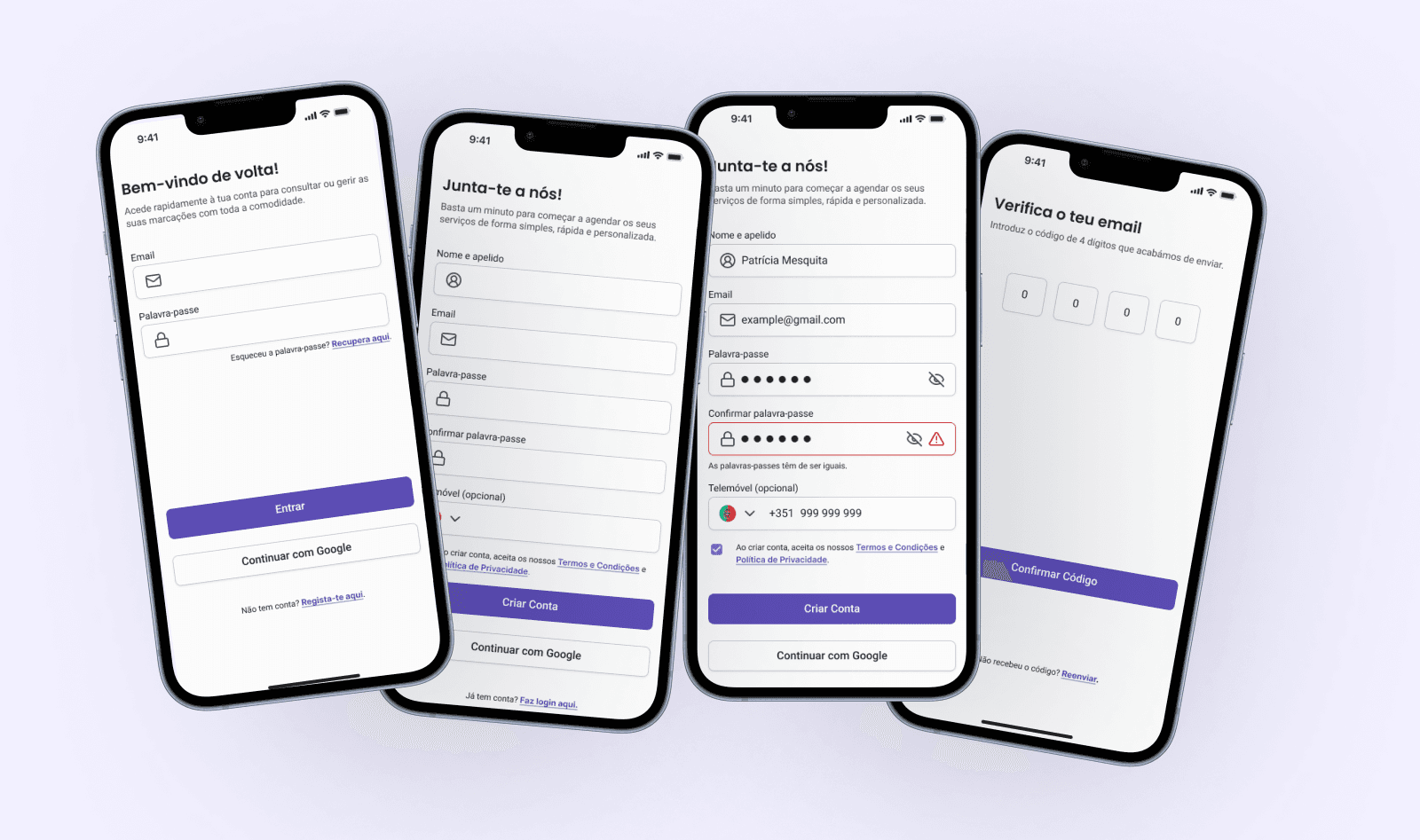
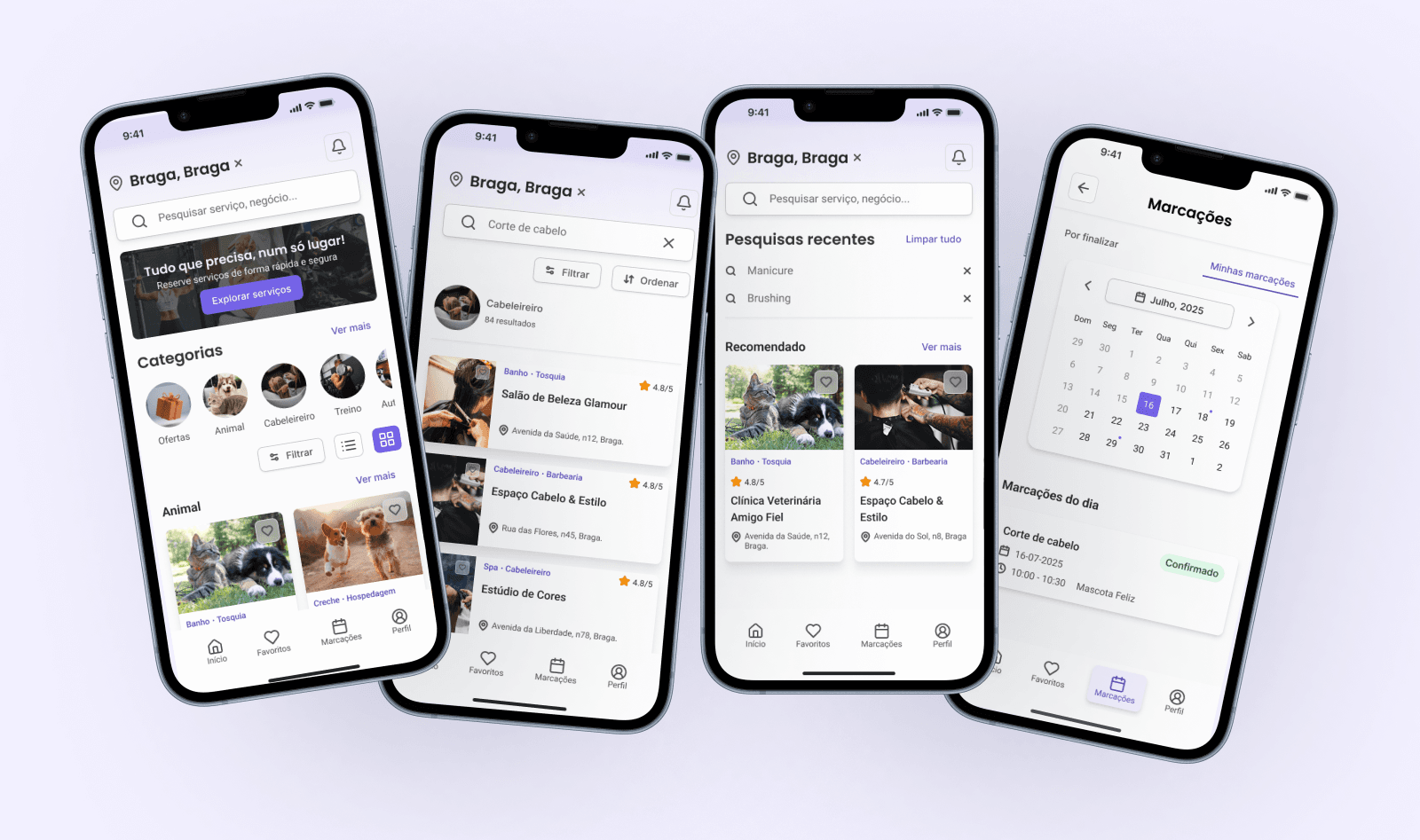
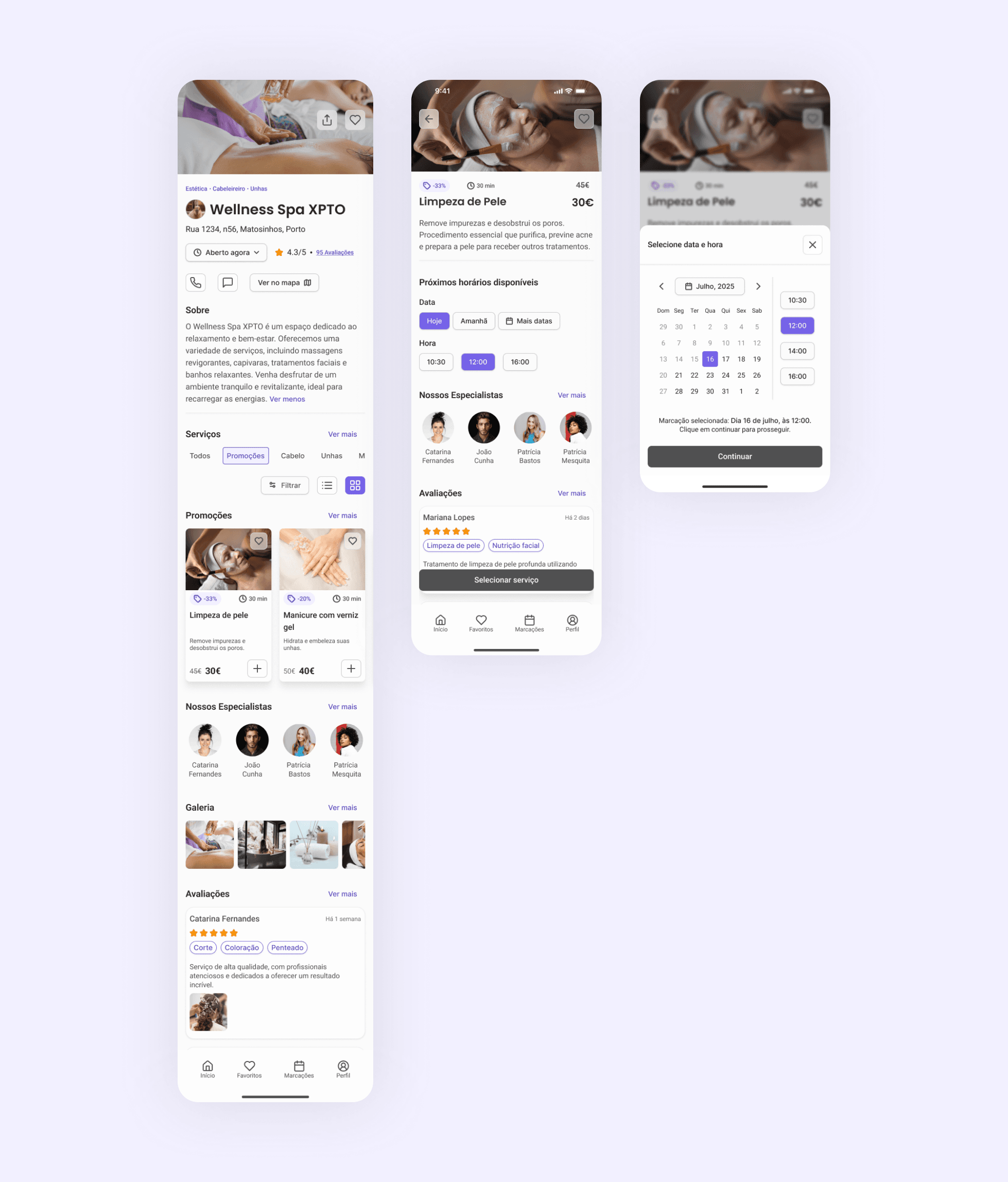
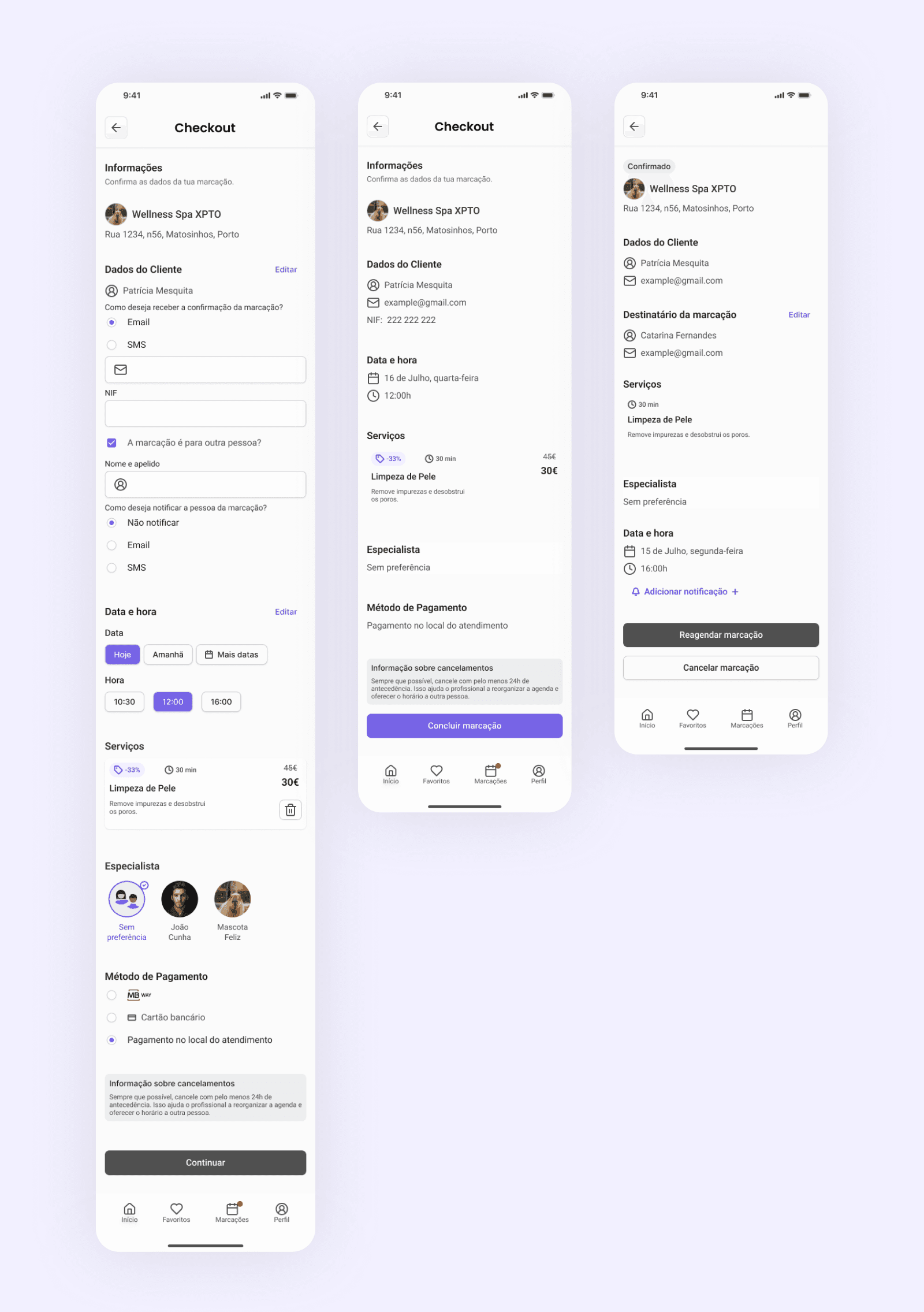
On the desktop version, the goal was to provide business owners with a comprehensive and organised view of their operations. The interface allows them to manage bookings in real time, control service catalogues, monitor team schedules, and simplify processes that were previously scattered or manual. The design balances clarity and efficiency, supporting better decision-making and smoother business management.
This final version demonstrates the visual consistency between mobile and desktop, ensuring a cohesive and recognisable identity. The design system developed for the project guarantees scalability and maintains a uniform experience across different contexts.
Below is a small demonstration of the screens designed.




In six weeks, we achieved a functional and robust MVP, ready to evolve. The Schedpoint project proved the value of multidisciplinary collaboration and became a great learning experience for the team.
Impact:
End users (mobile): now have a simple, fast and transparent scheduling process. User-centred design has reduced frustration and increased trust in the brand.
Business owners (desktop): have gained greater control over their schedule, centralised service and team management, as well as clearer reports to support decision-making.
Team: consolidated technical and creative skills, validated multidisciplinary collaboration and delivered a robust product with a solid architecture and scalable design system.
Overall impact: the project demonstrated that it is possible to develop a robust, functional and visually consistent digital solution in a short time frame without compromising the user experience.
Although the project was developed within a short timeframe, we managed to implement a fully functional service booking flow on the mobile version. This video shows a small real demonstration of the application running, exactly as built by the developers during the first development phase.
It is worth noting that this is not yet the final version: some visual and functional refinements are still to be added in future stages. Nevertheless, this proof of concept demonstrates both the robustness of the architecture and the viability of the solution.
After this first phase, we are fully aware there’s still work to be done. Our focus is on continuing to develop the product in an iterative and sustainable way:
Refining the implemented flow → improving the service booking experience on mobile, fixing details, and ensuring smoother usability.
Aligning the front-end with the design system → standardising buttons, colours, typography, and interactions for full consistency.
Developing key new flows → such as schedule management, cancellations, and user profiles.
Testing with real users → gathering continuous feedback to validate assumptions and adjust the solution to market needs.
Laying the groundwork for future integrations → preparing the structure for payments and calendar synchronisation.
The immediate goal is to consolidate the application as a functional MVP that can be tested with users before scaling into more complex features.
Building Schedpoint. was a demanding but enriching challenge. We successfully transformed an idea into a tangible product, with a solid foundation and ample room for growth.
More than the outcome, what stands out is the team experience: designer, developers, and project management, all working and learning together. We shared knowledge, supported each other, and pushed ourselves, and that shows in the product.
A special thanks to Codepoint, who provided us with a welcoming, dynamic, and collaborative environment. This project proved that with dedication and teamwork, it’s possible to achieve a lot in a short time.
